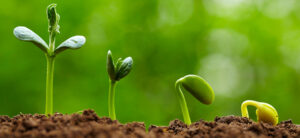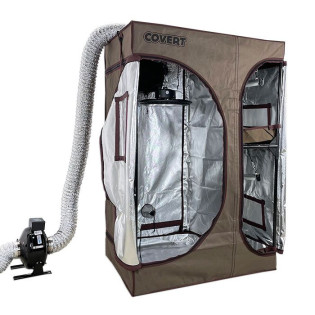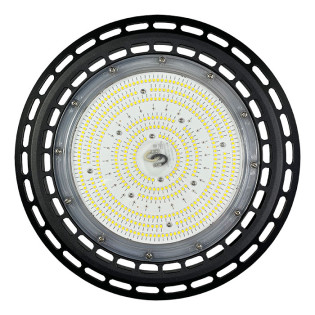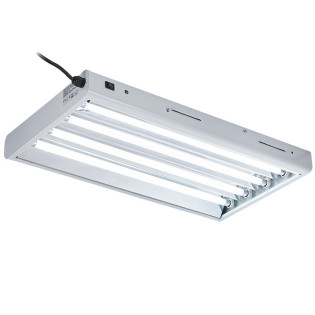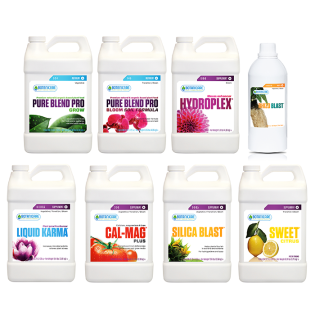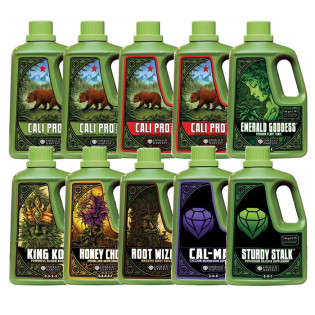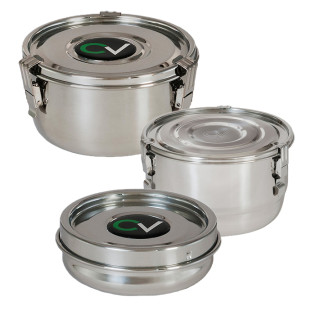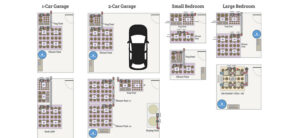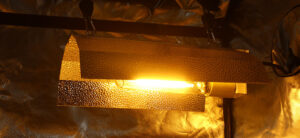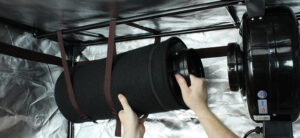
Whether you have a small closet grow setup or you just want to try something new & unique, the 12/12 from seed approach to indoor growing is for you!
This style of cultivating plants is very different from what you may be used to, and can help you maximize your space and time, while fitting more harvests into a year. You can experiment with more strains this way, too.
But, this method isn’t going to cultivate huge yields like you may have heard - at least, not when you do things the traditional way. We have our own little twist to this method we want to share with you to help you take full advantage of it.
Before we get to how to actually implement this strategy, we want to cover some basic information on it.
We’re going to discuss what exactly this method is, and why you should consider trying it.
Then, we’ll cover things you need to know such as average 12-12 from seed yield, how long the average harvest will take, whether this works with autoflowering varieties, and more.
We have a lot to cover, so let’s dive right in!
What Is 12/12 From Seed?
If you’ve grown indoors in the past, you know that we rely on grow lights since we don’t have the power of the sun at our disposal.
And, you also are aware that there are two different photoperiods when growing indoors - the veg cycle and the flower cycle.
Veg vs Flower - Grow Lights Affects Which Phase Your Plants Are In
During veg, your plants are under an 18 hours on, 6 hours off (or in some cases, 24 hours of straight light) lighting cycle. The plants focus on lot’s of lateral branching and foliage development. This photoperiod simulates the longer days of summer.
Then, you have the flower period - where you cut the lighting cycle back to 12 hours on, 12 hours off.

This change simulates the changing of seasons from summer to fall, which is when our plants would naturally start flowering outdoors. Here, they turn their attention to bud development.
Because you are in control of the photoperiod indoors, you get to manipulate it as you please. You can start flowering your plants after a nice 12-16 week veg cycle.
They will be monsters, and will produce monster yields. But do you really want to wait all this time? Do you even have the space for that size plant?
Many of us do not, and thus, can benefit from purposefully keeping our plants small and cranking out quicker, smaller harvests indoors. This is where the 12-12 from seed approach comes in.
Start Flowering Your Plants As Early As Possible With 12/12 From Seed!
With 12 12 from seed, you effectively skip the veg period and get right into flowering. Contrary to the name, you rarely will actually put your plants right into a flower photoperiod, though.

It’s commonplace to start seeds and let them develop a few sets of true leaves before initiating flower. This can take anywhere from 2-3 weeks.
While you can certainly try and flower your seedlings right from the jump, it’s incredibly rare that a seedling would start flowering this soon regardless of the photoperiod.
They need to harden off a bit, develop ample root mass, along with a few sets of leaves to really absorb the light and use that energy to grow.
We’ll talk more about the specific strategy and how to actually implement it later on. For now, we just wanted to clarify that while the name suggests you completely forego an 18/6 photoperiod, that isn’t necessarily the best approach.
Advantages Of This Growing Strategy
When you grow your seedlings or clones under a 12/12 lighting cycle, you unlock all kinds of benefits. For one, you have the ability to achieve quicker harvests - as quickly as 7 weeks in some cases!
You also can get more out of your growing space. For some growers, this is really the only strategy that makes sense due to space limitations!
You also have smooth, easy harvests. You won't be wasting your time trimming up small popcorn buds, because every plant is in essence a huge cola! And since your plants are only focusing their energy on one main cola, the potency and quality of your flower tends to be much higher.
Of course, there is a drawback to this method - and it's a big one. You won't be achieving any record breaking harvests. But, that's to be expected when you are putting an emphasis on keeping your plants small!
Who Should Give This Method A Shot?
For some of us, the idea of keeping our plants tiny sounds crazy. If you are growing outdoors, for example, this approach likely won’t make much sense.

However, if you’re late to the outdoor growing party, you can certainly pop some seeds and put them outside at the end of summer and attempt to flower your baby plants.
With that said, this is primarily a tactic for indoors growers. Particularly, indoors growers that fall into one of two categories:
- Those with limited grow room space
- Those looking to try a new, unique “plant training” strategy
If you’re growing in a closet, a small grow tent, or even just a small corner of your bedroom, you can’t afford to veg your plants very long. When you account for the stretch during the flip to flower, you really are limited on height.
By initiating a 12 12 photoperiod right from seed, you can fit more plants in your space, grouping them closer together.
Because of how these grow, you are essentially able to pack them all in tightly, sort of like a sea of green.
They are going to be single-cola plants, so you won’t have to worry about them interfering with each other or crowding too much.
Can You Give Autoflowering Seeds 12/12 Lighting?
Those growing autoflower varieties often ponder, can you give autoflowering seeds 12 12 lighting? The answer, unfortunately, is not really - it won’t provide you the results you’re looking for.

This is because autoflowering varieties don’t grow based on the photoperiod - they instead grow based on their own timeline, flowering at their own pace.
These are technically an even better approach to quick harvests than the putting seedlings under 12/12 lighting, though.
For those wanting quick harvests in under three months, you should strongly consider learning how to grow autoflower seeds.
What Is The Average 12/12 From Seed Yield?
We mentioned it earlier, but we want to help you manage your expectations before we go any further - don’t expect a huge 12 12 from seed yield.
There are a few reasons you won’t be achieving record breaking harvests with this approach, even if you do implement the sea of green strategy. There is a direct correlation between plant size and harvest weight. More particularly, root size and harvest weight.
Because you’re growing small plants, in small garden pots, you can’t expect huge yields - it’s just unrealistic.
However, if you’re the type of grower we mentioned earlier - either one that is time/space limited, or one that just wants to try something new and fun - this lower yield won’t be a dealbreaker for you.
Speaking of time-limited growers, let’s discuss exactly how long you can expect your plants to be ready for harvest.
How Long Does It Take To Harvest A Plant From 12/12 Seed?
There are so many different factors at play when it comes to determining how quickly a plant will be ready for harvest. For one, how quickly you initiate the flower phase.
Another important factor that is often overlooked is specific strain and seed quality. If you try and pop old, dormant seeds with poor genetics, your plants are going to experience slow growth no matter what.
There are other factors at play too, including the specific type of grow light you implement, what plant nutrients you’re feeding, the environment, etc.
However, we can leave you with a good rule of thumb. Expect your plants to be ready for harvest within 3 months of starting your seeds.
In some instances, this can take as long as few as 6-9 weeks or as long as 4 months, with various variables at play.
How To Actually Start 12/12 From Seed - Tips & Tricks
If you’re ready to give this a try, there are just a few things you should know beforehand.
After we share best practices for the traditional method, we’ll share a few ways you can tweak it and optimize this process to get quicker, heavier yields with seedlings under a 12/12 lighting photoperiod.
Start By Germinating Your Seeds
Of course, the first step in starting this strategy is actually germinating your seeds!
This can be tough for novice growers, so check out our complete guide on starting seeds. But, in summary, starting seeds requires just a few things:
- Moisture
- Warmth
- Light
- Patience!
Many growers have success with the paper towel method, but if you’re serious about this and are looking to start a larger quantity of seeds as quickly and effectively as possible, our complete seed starting kits are a must have.
They include everything you need to achieve a high germination rate, and get your seeds sprouted into baby plants in no time.
Give Your Seedlings 2-3 Weeks To Harden Off
Once your seeds have sprouted, you can initiate the veg cycle for a few weeks to give these seedlings a chance to develop a root system, harden off, and develop a few sets of true leaves.
During this phase, you can give them 24 hours of direct light. This will speed up the rate at which they grow.
During this phase, you are best off using a lower intensity fluorescent grow light, because a higher powered fixture will cause too much heat stress.
Flip To Flower (12 hours on, 12 hours off)
Once your plants look like they can handle it, you can bring in your main lighting source - whether it be CMH, LED, or good old HID’s.
Then, flip the photoperiod to 12 hours on, 12 hours off, and let your little baby plants start flowering! In terms of the rest of the grow cycle, you’d really just treat it like any other grow.
Feed your plants the right nutrients (keep in mind you’ll want to start at the flowering stage, don’t feed your veg nutrients during flower!), keep pH adjusted, and monitor the growing environment.
Within three weeks your plants should be ready to be cut and hung to dry!
Combine The 12-12 From Seed Method With Sea Of Green
Now, we mentioned you aren’t going to see huge 12 12 from seed yield. However, when combined with the sea of green approach, you can actually end up harvesting a respectable weight.
It’s just a numbers game. Since your plants are going to be so small, you need to compensate by squeezing as many of them in your growing space as you can.
Try 12/12 From Clone Instead For Faster Harvests & Heavier Yields!
If you want to harvest your plants even quicker, you can try a twist on this approach - 12 12 from clones! Simply take a shoot of growth from a large mother plant, and repot it. Our guide on cloning a plant might be a good read if this is new to you.
When compared side by side, clones will start flowering much quicker than seedlings. In fact, you can take your clone and put it directly into a 12/12 lighting photoperiod and watch it begin flowering as soon as it takes root!
This will shave off a few weeks from the growing cycle compared to starting from seed, and your plants will show signs of bud development much sooner. You can try both and see which one works better for you!
Final Thoughts On 12/12 From Seed
Now, you are aware of all the benefits of this unique growing strategy, and you know how to do it. We’ve shared a couple tricks you can use to increase your yield and decrease the time to harvest.
So all that’s left to do now is grab your growing supplies, seeds, or clones and get started! If you haven’t already figured out your grow room setup, we encourage you to click that link and check out some of the common examples you can bring to life.
As far as actually setting up your grow room, there is no better way than with a complete grow tent kit. These contain everything you need to start growing indoors, including:
- Grow light (choose your technology and specific light fixture)
- Grow tent (contain the mess of your grow and dial in the atmosphere)
- Ventilation system (bring fresh, clean air in while expelling hot, stinky, dirty air)
We even have a review of the top grow tent kits of the year, so you can find one for you whether you’re looking for a tiny little multi-chamber kit or a huge 8’ x 8’ tent to fill your garage.
OR, build your own grow tent package! Our customizer will allow you to configure your setup however you like.
If you need any help finding the right products or equipment for your next grow, don’t hesitate to reach out!





